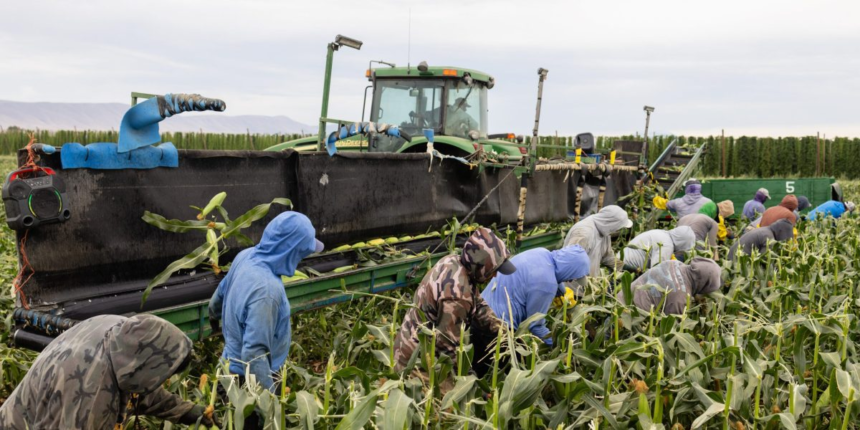The Trump administration quietly issued a dire warning about the president’s immigration crackdown, admitting that it risks food shortages and that American workers will not step up to fill labor needs.
It added that the lack of undocumented and documented workers “results in significant disruptions to production costs and threatening the stability of domestic food production and prices for U.S consumers.”
At the same time, the Labor Department’s filing also admitted that Americans are not willing to replace undocumented farmworkers.
That’s despite a sharp slowdown in the overall labor market in recent months with hiring coming to a near standstill as Trump’s aggressive tariff regime raises costs and creates uncertainty for businesses.
But the Labor Department sees things much differently.
“In addition, the Department does not believe American workers currently unemployed or marginally employed will make themselves readily available in sufficient numbers to replace large numbers of aliens no longer entering the country, voluntarily leaving, or choosing to exit the labor force due to the self-perceived potential for their removal based on their illegal entry and status,” the filing in the Federal Register said.
According to the Census Bureau, foreign-born workers made up less than 19% of the U.S. labor force in 2023 but accounted for 38% of jobs in farming, fishing and forestry. The Federal Register filing suggested that share is higher, estimating that 42% of the U.S. crop workforce is unable to enter the country, faces potential deportation, or is leaving the U.S.
The Labor Department also recognized that agricultural work is among the most physically demanding and hazardous occupations in the U.S., requiring manual labor, long hours, and exposure to extreme weather.
The department added that its experience with the H-2A visa program demonstrates “a persistent and systemic lack of sufficient numbers of qualified, eligible and interested American workers to perform the kinds of work that agricultural employers demand.”
The lack of immigrant workers represents another headwind hitting the agriculture economy, which has been suffering from lower crop prices and high input costs for the last three years.
And more recently, Trump’s trade war has prompted China to hold off on buying any U.S. soybeans, causing farm groups to plead with the administration to reach a trade deal that unlocks orders as harvest season begins.
The Labor Department cited studies that have found that even a 10% decrease in the agricultural workforce can result in a 4.2% drop in fruit and vegetable production and a 5.5% decline in farm revenue.
“U.S. agricultural employers need a legal and stable workforce to support their farming operations, and persistent labor shortages and increases in production costs will only harm U.S. competitiveness, threaten food production, drive up consumer prices, and create instability in rural communities,” the filing said.









